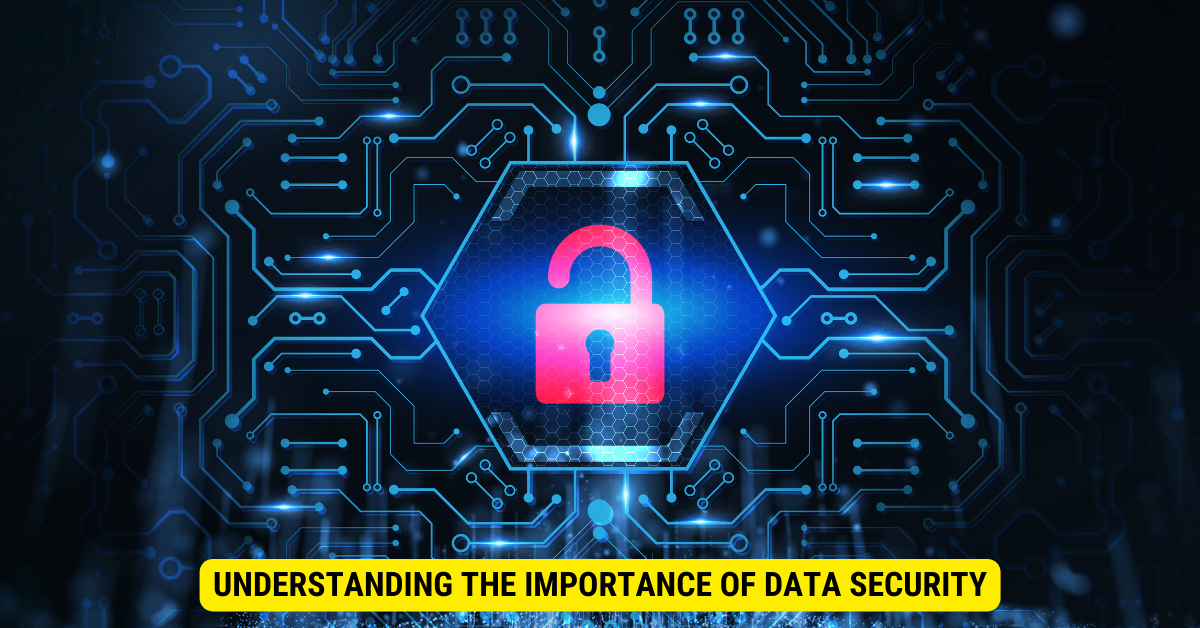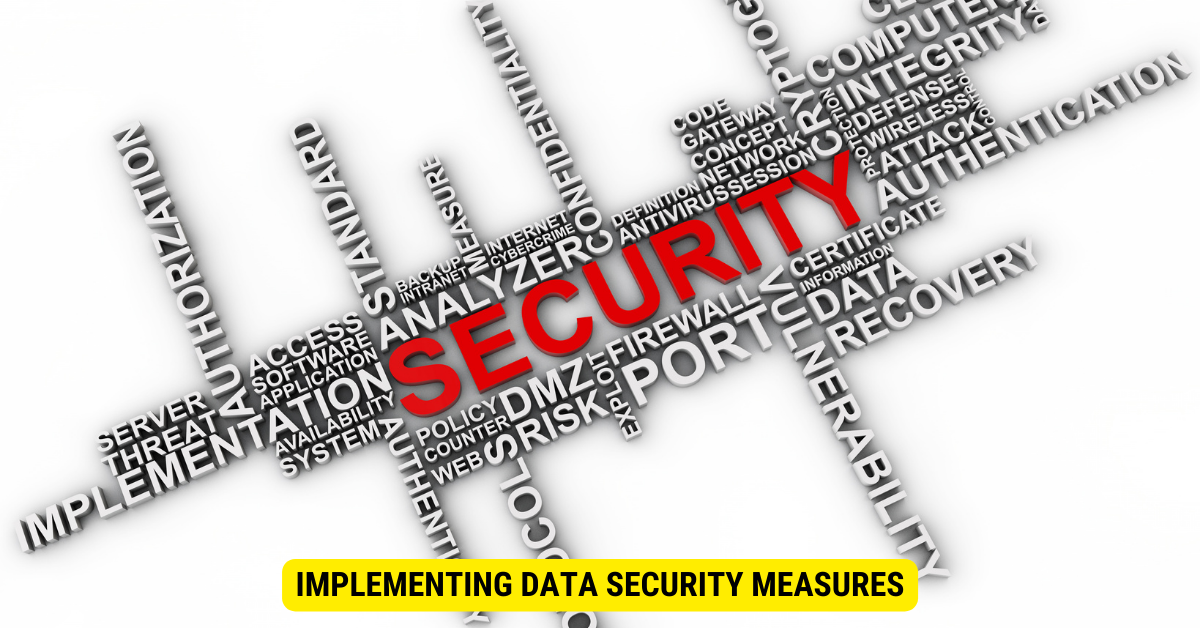To make a secure data site, one should implement strong encryption, user authentication, access controls, and regular backups and ensure a robust infrastructure against cyber threats.
In today’s digital age, data has become one of the most valued assets for businesses of all sizes. Protecting this data from unauthorized entries and potential breaches is crucial, whether it’s customer information, financial records, or trade secrets. I will explore the key elements and techniques necessary to create a secure data site.
Understanding the Importance of Data Security

Data security is not just about safeguarding information; it’s about protecting your business’s reputation and ensuring compliance with relevant regulations. A single data breach can result in severe penalties, such as financial loss, legal actions, and the loss of customer trust. Therefore, establishing robust data security measures is essential to modern business operations.
When it comes to data security, the stakes are high. The digital land constantly evolves, and cyber threats are becoming more sophisticated. Hackers and malicious actors continually seek susceptibilities to exploit and gain unauthorized access to sensitive data. Businesses must stay one step ahead by implementing comprehensive security measures.
One of the most significant consequences of inadequate data security is the risk of unauthorized data access. When sensitive info falls into the wrong hands, it can lead to identity theft, monetary fraud, and other malicious activities. This puts the affected individuals at risk and exposes businesses to legal liabilities and financial repercussions.
The Consequences of Inadequate Data Security
Without adequate data security, businesses expose themselves to various risks. These risks include unauthorized data access, manipulation, loss, and reputational damage. Failing to handle customer data securely can result in legal liabilities and hefty fines.
Data manipulation is another significant consequence of inadequate data security. Hackers can alter or modify data, leading to inaccurate information, which can have severe implications for businesses. Imagine the chaos if financial records, customer details, or product specifications were tampered with. The trust and credibility of the business would be shattered, leading to a loss of customer confidence and potential legal disputes.
Data loss is yet another consequence that businesses must be wary of. Whether due to a cyber attack, hardware failure, or human error, the damage to critical data can be devastating. It can disrupt business operations, lead to financial losses, and even jeopardize the continuity of the entire organization. Without proper data backup and recovery mechanisms, businesses may struggle to recover from such incidents.
Key Elements of Secure Data Sites
Creating a secure data site requires combining various elements to ensure data protection. These elements include encryption, user authentication, access control measures, regular security audits, updates, and ongoing training. By integrating these elements, organizations can establish a solid security foundation for their data site.
Encryption is a fundamental aspect of data security. It involves converting sensitive information into an unreadable format, making it useless to unauthorized individuals. By implementing strong encryption algorithms, businesses can guarantee that even if data is intercepted, it remains inaccessible and unintelligible.
User authentication is another critical element in securing data sites. By implementing strong password policies, multi-factor authentication, and other authentication mechanisms, businesses can verify the identity of individuals accessing their systems. This helps stop unauthorized access and ensures only authorized personnel can view and manipulate sensitive data.
Access control measures play a crucial role in data security. By granting appropriate access privileges to individuals based on their roles and responsibilities, businesses can limit the exposure of sensitive data. This helps minimize the danger of unauthorized access and reduces the likelihood of data breaches.
Regular security audits and information are vital to maintaining data site integrity. Businesses can stay ahead of potential threats by conducting periodic assessments of security measures and promptly addressing any vulnerabilities or weaknesses. Moreover, staying up to date with the newest security patches and updates helps protect against known vulnerabilities and exploits.
Ongoing training and education are vital to ensure employees know data security best practices. By providing regular training sessions and keeping workers informed about the latest threats and techniques hackers use, businesses can create a culture of security awareness. This empowers employees to be proactive in identifying and reporting potential security risks, strengthening the organization’s overall security posture.
Establishing Your Data Site’s Foundation
Before diving into the various security measures, launching a solid foundation for your data site is crucial. This foundation involves selecting the right platform for your data site and setting up the necessary infrastructure to support its operations.
When choosing the right platform for your data site, several factors must be considered. Scalability is one of the key considerations. You want a platform that can handle the growth of your data site as your business expands. Look for platforms that offer flexible storage options and the capacity to add or remove resources as needed easily.
Reliability is another important factor. Your data site must always be available to users, so choosing a platform with a strong uptime guarantee is essential. Look for platforms that have redundant systems in place to minimize downtime and ensure continuous access to your data.
Security features should also be a top priority when selecting a platform for your data site. Encryption is critical to data security, so look for platforms that offer robust encryption capabilities to protect sensitive information. Additionally, consider platforms that provide frequent security updates to stay ahead of emerging threats. A platform with a track record of protecting customer data is also a good indicator of its security measures.
Compliance with industry-specific regulations is another important consideration. Depending on the nature of your business, you may be subject to certain data protection regulations. Ensure your chosen platform complies with these regulations to avoid legal or regulatory issues.
Once you have selected the right platform, it’s time to set up your data site’s infrastructure. Building a secure data site requires carefully planning and implementing various security measures.
First and foremost, you must ensure that your data center or hosting provider has the necessary physical security measures. This includes controlled access to the facility, surveillance cameras, and security personnel. These measures help prevent unauthorized physical server access and protect your data from theft or tampering.
Network security is equally important. Implementing firewalls and intrusion detection systems helps protect your data site from unauthorized access and potential cyber-attacks. Regularly updating software and firmware is crucial to patch vulnerabilities and protect against emerging risks. Additionally, consider implementing a backup strategy to protect your data in case of hardware failures or other unforeseen events.
In conclusion, establishing a solid foundation for your data site is essential for its long-term success. By carefully selecting the right platform and setting up a secure infrastructure, you can ensure your data site’s scalability, reliability, and security, providing a strong base for your data-related operations.
Implementing Data Security Measures

Once you have established the foundation, it’s time to implement data security measures to protect your site and its data from unauthorized access.
Encryption: The First Line of Defense
Encryption is a critical aspect of data security. Implement robust encryption algorithms to protect data both at rest and in transit. Encrypt sensitive information such as user credentials, financial records, and customer data. Consider using industry-standard encryption methods and regularly update encryption protocols to stay ahead of potential threats.
User Authentication and Access Control
Implement a strong user authentication system to guarantee that only authorized personnel can enter sensitive data. This may involve requiring strong passwords, implementing multi-factor authentication, and reviewing user access privileges regularly. Additionally, restrict access to data on a need-to-know basis and implement granular access controls to limit user permissions.
Regular Security Audits and Updates
Conduct regular security audits to identify vulnerabilities and weaknesses in your data site’s security infrastructure. Stay knowledgeable about the latest security threats and address any vulnerabilities promptly. Regularly update software, firmware, and security patches to protect against emerging risks.
Maintaining Your Secure Data Site
Creating a secure data site is an ongoing process that requires continuous monitoring and maintenance.
Monitoring for Potential Threats
Implement robust monitoring systems to detect potential security threats. Monitor system logs, network traffic, and user activity for anomalies or suspicious behavior. Deploy intrusion detection and prevention systems to promptly identify and respond to potential attacks.
Responding to Security Breaches

Despite our best efforts, security breaches may still occur. Create an incident response plan to handle security breaches effectively. This plan should include actions for identifying and containing breaches, notifying affected individuals, and initiating recovery and forensic processes. Regularly test and update the incident response plan to guarantee its effectiveness.
Ongoing Training for Data Security
Invest in ongoing training for your employees to increase their understanding of data security best practices. Educate them about common threats, social engineering techniques, and the importance of adhering to security procedures. Regularly update training materials to keep up with evolving security challenges.
Exploring Advanced Data Security Techniques
As technology continues to advance, so do the threats to data security. Exploring advanced techniques can help organizations stay ahead of potential risks.
The Role of AI in Data Security
Artificial intelligence (AI) plays a significant role in data security. Machine learning algorithms can examine large volumes of data to detect patterns and irregularities that may designate potential security breaches. By leveraging AI-powered solutions, organizations can proactively identify and mitigate security risks.
The Future of Secure Data Sites
As technology evolves, so must our approach to data security. The future of secure data sites may involve the addition of emerging technologies such as blockchain, biometrics, and quantum encryption. Staying informed about these advancements and adapting security measures accordingly will help ensure the ongoing protection of your data site and its valuable assets.
Key Takeaways
- Implement strong end-to-end encryption to ensure data privacy.
- Use multi-factor authentication (MFA) to bolster user access security.
- Regularly update and patch the software to stop vulnerabilities.
- Set role-based access controls to limit unauthorized access to sensitive data.
- Back up data regularly and ensure it’s stored securely.
FAQs
Q: What is multi-factor authentication?
A: MFA is a security system that requires more than one authentication method from different categories of credentials, such as something the user knows (password) and something the user has (security token or a smartphone).
Q: Why is encryption important for a data site?
A: Encryption transforms data into a code to prevent unauthorized access, ensuring the data remains confidential and secure from breaches.
Q: How often should I back up my data?
A: Ideally, data should be backed up daily, but the frequency depends on how often the data changes and the criticality of the data.
Q: What is role-based access control?
A: It’s a method where access rights are granted based on the role within the organization, guaranteeing that only authorized individuals can access specific data.
Q: Are physical security measures also important for a data site?
A: Yes, securing the physical infrastructure hosting the data, such as data centers, is crucial to prevent theft, tampering, or damage.
Conclusion
In conclusion, establishing a secure data site is crucial for protecting valuable information, maintaining customer trust, and ensuring compliance with regulations. Organizations can create a robust data security framework that safeguards their data against potential threats by understanding and implementing the key elements and techniques outlined above. Recall data security is not a one-time task but a continuing process that needs continuous monitoring, proactive measures, and staying informed about the latest trends and advancements.
